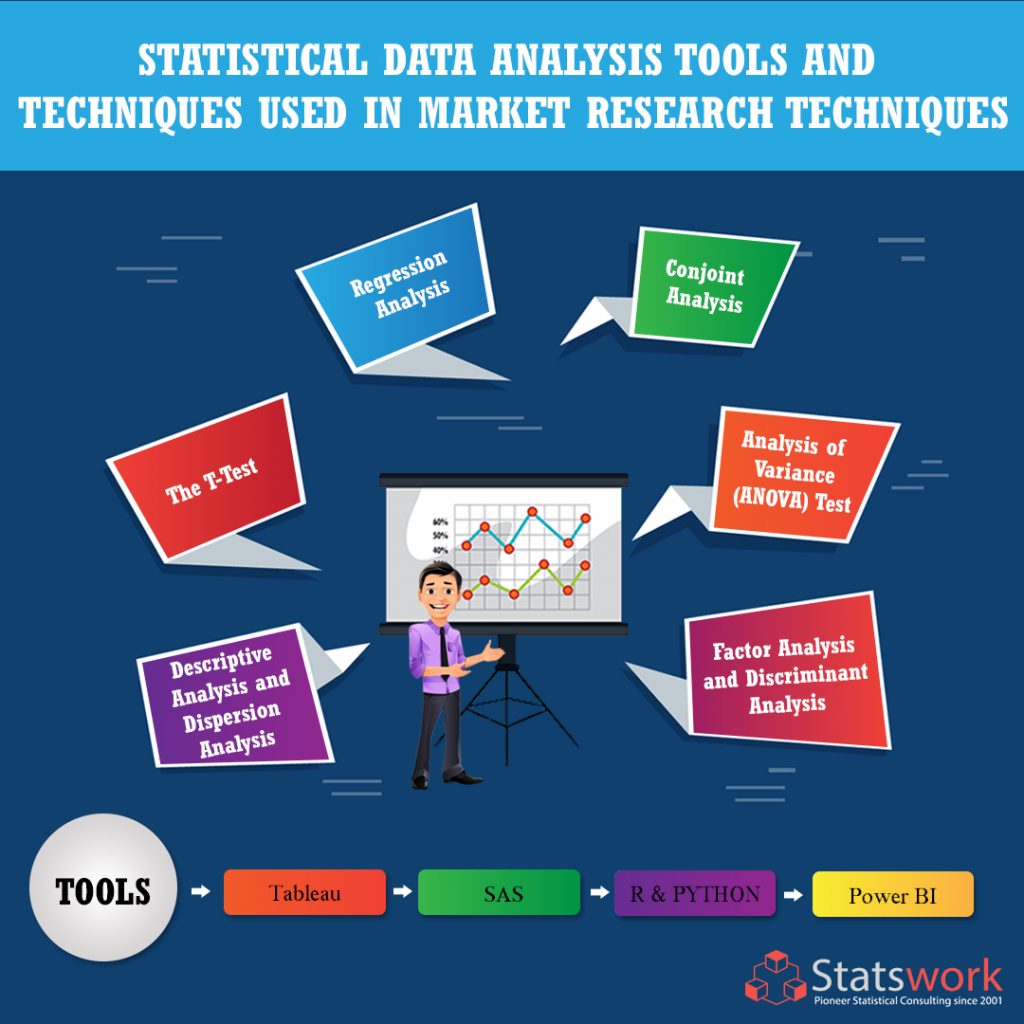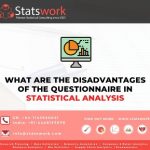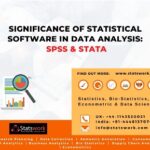Popular statistical data analysis tools and techniques used in market research
In-Brief:
- Statistical data analysis is a method used for performing numerous statistical operations. It’s a kind of quantitative research, which seeks to quantify the data, and usually, relates some form of statisticalanalysis.
- It is a survey-based analysis technique that helps market research to determine how people value various attributes (feature, function, benefits) which makes up an individual product or service.
Introduction
Statistics is fundamentally a science that includes data interpretation, data collection, and data validation. Statistical data analysis is a process of accomplishing various statistical operations. It is a kind of quantitative research, which seeks to quantify the data, and applies some form of statistical analysis. Quantitative data involves descriptive data, such as survey data and observational data. Market Research and Competitive Statistical Analysis: Market research is how product managers gather information about customer needs and market drivers. Competitive Statistical is the subset of market research. Numerous data analysis tools and techniques are existing in the market, having its own set of functions. The choice of tools should always be based on the type of analysis conducted, and the data used.
Data analysis techniques
Regression Analysis
The statistical techniques used to carry out the relationship between two or more variables. A variation in the dependent variables mainly depends on and is associated with, a change in one or more independent variables.
Linear regression- It uses an independent variable to predict the result of the dependent variable.
Multiple regressions –It uses at least two independent variables.
For example: Analyzing a particular organization or retail shop, before and after advertising. The money the store spends on publicity will be considered as an independent variable; the number of people will be the dependent variable. Online Statistical Analyses Services Help gives you a clear guidance about conducting an effective survey.
The resulting graph obtained from the regression analysis shows the regression curve. It shows the impact of money on publicity, whether it increases or decreases: only in some rare cases data will be directly proportional, so some degree of the curve will always be on the graph.
Analysis of Variance (ANOVA) Test
It is used along with regression to identify the effect of independent variables over the dependent variable. It compares multiple groups simultaneously to find the relationship between them, e.g. analyzing whether a different type of advertisements gets different consumer responses.
Conjoint Analysis
It is a survey-based analysis technique that helps market research to determine how people value various attributes (feature, function, benefits) which makes up an individual product or service. The ultimate aim of conjoit analysis is to identify at what combination the attributes is effective for the respondent choice. A controlled set of possible products or services is displayed to the survey respondent. By analyzing how they decide on choosing the products, the implicit evaluation of the individual elements makes up the product or service can be determined. These implicit valuations generate market models that evaluate market share, income and even success of new designs.
Market researchers always love to predict people. To identify some fundamental reasons, why people make complex choices. And Conjoint analysis is close to this; it inquires people to create trade-offs while creating decisions, just as they carry out in the physical world, then examines the outcomes to give the most popular result. If you find difficulty with the survey-based analysis, you reach Professional Help With Analysis Of Statistical Data to get efficient research work.

The T-Test
A t-test help to associate two data groups which have different mean values, e.g. do male and female have different mean heights? The t-test enables the user to interpret whether differences are meaningful or merely coincidental. It is used to identify the significant difference between the mean of two clusters, which may be connected in certain aspects. It is one of many tests used for hypothesis testing in statistics.
Professional Help with Analysis of Statistical Data helps you to get an effective test.
Calculating a t-test requires three fundamental data values,
- The mean difference that is a difference between the mean values from each data set
- The standard deviation of each group, and
- The number of data values.
Descriptive Analysis:
It takes the historical data, Key performance indicators, and elaborates the performance based on the selected benchmark. It considers the past trends and how they might impact future performance.
Dispersion Analysis: It is an area onto which a data set is spread. This technique helps the data analysts to identify the variability factor which is under study.
Factor Analysis: This method used to determine the existence of a relationship between groups of variables. This process reveals factors or variables which describe the patterns in the relationship among the original variables.
Data Analysis Tools
Numerous Data analysis tools are existing in the market, having its own set of functions. The choice of tools should always be based on the type of analysis conducted, and the data used. The following are the list of few Data Analysis tools used for compelling.
Tableau
It comes under the BI Tool category, created for individual data analysis purpose. The soul of Tableau is the Pivot Table and Pivot Chart and works towards demonstrating data in the most user-friendly way. It also contains a data cleaning feature along with brilliant analytical functions.
Power BI
It started as a plugin for Excel, and later it detached from it to create one of the most powerful data analytical tools. It has three different versions. It consists of a power pivot and DAX language, which help implement sophisticated advanced analytics similar to writing Excel formulas. Online Statistical Analyses Services help you with handling various data analysis tools.
R & Python
R & Python are the powerful and flexible programming language; R is used for statistical analysis, such as cluster classification algorithms, normal distribution, and regression analysis. It also helps in an individual predictive analysis like customer behavior, their expenditure, and their preferred items based on their browsing history, and so on. It also includes machine learning and artificial intelligence concepts.
SAS
SAS is a data analytics and data manipulation programming language, which can effortlessly access data from various resources. SAS has presented a broad set of customer profiling products for web, social media, and marketing analytics. It can predict their behaviors, manage, and optimize communications.
Conclusion
Statistical consulting for dissertations is our exclusive focus. And which is essential for many fields and offers extensive potentials to people in need of it. Statistical Analysis and Consulting Services are popular and applied in every aspect of society because it ensures adequate and successful functioning of an organization.
Reference
- Ali, Z., & Bhaskar, S. B. (2016). Basic statistical tools in research and data analysis. Indian journal of anaesthesia, 60(9), 662.
- Cizek, P., Härdle, W. K., & Weron, R. (Eds.). (2005). Statistical tools for finance and insurance. Springer Science & Business Media.

 Previous Post
Previous Post Next Post
Next Post